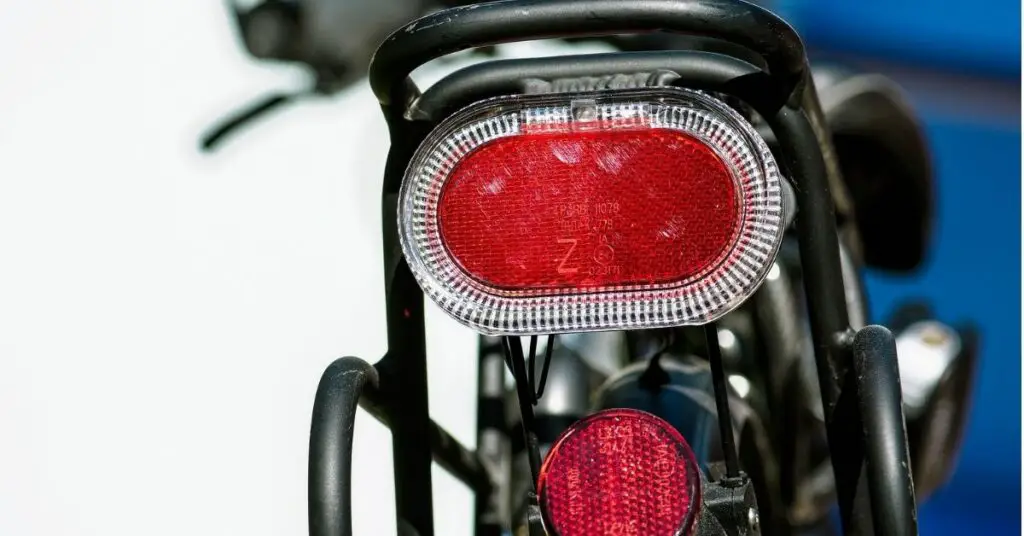Bike racks are essential for your bike if you plan on using your bike to commute, run errands, tour, etc.
But what if you see a bike rack that looks good online and wish to have it, but you don’t know if that particular rack will fit your bike? It’s natural to be anxious when trying to get the right rear rack for your bike.
Don’t Worry!
This article will provide information on how to know which fits your bike, how to install it, and all other information you need in choosing a suitable rear rack for your bike.

How Do I Know If a Rack Will Fit My Bike?
Bike racks attached to the rear of bikes have rails that make it easier for panniers, baskets, gears, etc to be secured to your bikes.
Since it’s not all bikes that come with racks, you would have to buy and attach racks to yours if you’d like to transport loads from one place to another.
Well, there are several things to look out for and several ways of knowing which rack is a good fit for your bike, which we’ll be discussing.
1- Eyelets
The first thing to check before buying a bike rack is if your bike has eyelets or not. Eyelets are small holes built into bike frames and dropouts for attaching racks.
Most road and cyclocross bikes do not come with eyelets. This means they cannot use most of the standard bike racks sold online and in stores.
These types of bikes use racks that are specially built for them. Their bike racks come with clamps that make mounting easy. They are mostly mounted on seat posts.
These Seatpost mounted racks also have rails that panniers can be attached to, just like the standard racks, and also have guards that prevent the panniers from touching the spokes of the wheels.
2- Brakes
Check the brakes of your bike. Is your bike having disc or rim brakes? Because this also determines the rack that will fit.
A bike rack meant for a mountain bike with disc brakes may not fit a mountain bike with rim brakes.
Bikes with disc brakes sometimes have their eyelets below the brake mechanism. If this is the case, mounting a non-disc brake rack would affect the brakes and would simply not fit.
This type of bike needs a rack that is specially designed to accommodate this, or a seat post mounted type of rack that does not need eyelets.
So make sure that the bike rack you saw will suit your bike brake mechanism, before purchasing it.
3- Bike Size
Another factor to consider while questioning whether a rack will fit your bike is to check if it fits the size of your bike.
Most mountain bikes are bigger than road bikes, have bigger wheels and frames, which makes them use different types of bike racks.
There are bike racks specifically designed for bigger bikes with wheels of like 29″ which wouldn’t fit a normal-sized bike.
So when shopping for a bike rack, in addition to keeping your bike frame and break in mind, also put your bike size into consideration. Doing this will make it easier to choose a rack that easily fits your bike.
4- Heel Clearance
Some manufacturers make their bikes with racks in mind so these bikes have long chainstays. This gives enough space allowance to prevent your heel from coming in contact with the panniers while riding.
Most road bikes however come with short chainstays. If this is the case with your bike, then you need a rack with more space allowance to accommodate your heel.
What to Do If Your Bike Rack Doesn’t Fit Your Bike?
If perhaps, you bought a bike rack before reading this article and you bought one that doesn’t fit, then read this.
You probably bought a standard rack that is meant to fit all bikes, but the problem with these racks is that they are usually too skinny for bigger bikes like mountain bikes. The rack would fit at the dropouts of the bike but wouldn’t fit at the frame.
When this happens, you can fix it in two ways…..
1- You can either mount the rear rack on the inside of your frame’s dropout and then use spacers to fill in the space between the rack and the frame.
2- If the fitting inside the dropouts interferes with your bike’s rear derailleur, you can try this one. Pull the legs of the bike rack out a bit, stretching it to fit the frames at the seat post. This will lengthen the rack and allow for easy attachment to the frame.
What to Look For When Buying a Bike Rear Rack?
Now that you know which racks fit your bike and how to choose them, it’s time to go shopping.
But before you do, you should know the qualities to look for in a rear rack. Not all rear racks that fit your bike will have the qualities that make it a match for your bike and your needs.
Let’s dive right into it…….
1- Material
Bike racks usually come in steel, aluminum, and titanium materials. They vary in qualities and cost depending on your preference.
A. Steel bike racks are the strongest. They can be used to carry heavy loads and can be easily fixed if broken. They are however prone to rust unless they are stainless steel, and they are heavy.
B. Aluminum bike racks on the other hand are the cheapest. They are light and strong but cannot handle too much load.
C. Titanium bike racks are the most expensive. They are light and can still carry heavy loads. They also do not corrode or rust.
2- Weight
Racks, irrespective of the materials they come in, have different weight limits. Choosing a bike rack should be based on the kind of load you’ll be using your bike to carry.
Bike racks can carry between 20-80 pounds depending on the type, model. Most Seatpost mounted racks carry between 15-25lbs and nothing more, so choose wisely.
You should also know that different bikes have a limit of weight they can carry. When you know your bike’s weight limit, you’ll be able to choose a bike rack accordingly.
How to Install a Rear Rack on Your Bike?
Now that you’ve chosen a rack that fits your bike, it is time to install it. This process is simple and can be done in a few minutes. I’ll explain it in steps to make it easier for you.
Method 1
This method is for you if your bike comes with braze ons/eyelets.
YOU’LL NEED
1- Bike rack
2- Struts
3- Bolts
4- Allen key
5- Clamps
STEPS
STEP 1: Ensure the rack’s struts are in place and aren’t bolted too tight.
STEP 2: Align the eyelets on the rack to the eyelets above the rear axle on your bike’s dropout, and slip a bolt through them. Tighten it loosely with an Allen key.
STEP 3: Do the same thing on the other side of the bike.
STEP 4: Position the rack to be straight and level, and bend the struts so the holes in them align with the holes in the top frame.
STEP 5: Slip bolts in the holes on the two sides and tighten them loosely.
STEP 6: Check if the rack is well set up and works fine. Then tighten all the bolts well. Don’t forget to tighten the bolts on top of the rack.
Method 2
This method is for you if your bike frame doesn’t have eyelets on the top (few inches below your seat stays). Clamps are used instead. Note that these clamps work better on metal tubes.
YOU’LL NEED
1- Bike rack
2- Struts
3- Bolts
4- Allen key
5- Clamps
STEPS
STEP 1: Attach the bike rack to your bike at the dropouts.
STEP 2: Attach the clamps to the seat tube, where the eyelets are supposed to be.
STEP 3: Align the holes on the struts to the holes on the clamps and slip bolts through. Tighten them.
STEP 4: After making sure the rack is well positioned and isn’t bent or badly set up, use an Allen key to tighten all the bolts on the rack well.
Using Rear Rack for the First Time
Carrying loads on your bike with bike racks for the first time can be a bit difficult.
The weight can affect your handling and may want to discourage you but it gets better.
It just needs some getting used to. After a while, you won’t even notice it.
Final Thoughts!
Bike racks not only make it easy to tour, run errands, and transport loads from one place to another, they also make your bike look more elegant. This is because they come in various designs, colors, and materials.
Choosing one that fits your bike is important, as it can determine if you will be having a good ride (with proper balance) and whether or not it will hold the kind of luggage you want to carry.
Bike racks can use more than one pannier and can also be used to transport sensitive items like laptops. Choose one that fits your bike, budget, and needs, and enjoy your rides!
Cheers!

